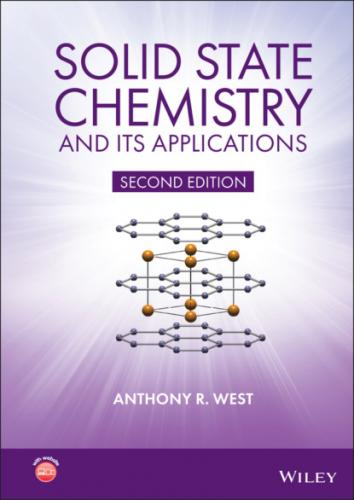Consideration of atom arrangements in the three structure types described above shows that the concept of cp anions with cations in interstitial sites begins to break down in the fluorite structure. Thus, while the antifluorite structure of Na2O may be regarded as containing ccp O2– ions with Na+ ions in tetrahedral sites, in the fluorite structure of CaF2, it is necessary to regard the Ca2+ ions as forming the ccp array with F– ions in tetrahedral sites. In CaF2 the Ca2+ ions have a eutactic ccp arrangement, but are well separated from each other; from Table 1.9 and Table 1.10, Ca–Ca = 3.86 Å, which is much larger than the diameter of a Ca2+ ion (depending on which table of ionic radii is consulted, the diameter of Ca2+ is in the range ~2.2–2.6 Å).
The F–F distance in CaF2 is 2.73 Å, which indicates that the fluorines are approximately contacting
1.17.2 Diamond
This structure type, so important to the semiconductor industry, has already been described, as the zinc blende or sphalerite structure, Fig. 1.29 and Fig. 1.33. The diamond structure is obtained when the two elements in zinc blende are identical, as in diamond. It may therefore be described as a ccp array of carbon atoms, with one set of tetrahedral sites (either T+ or T–) occupied also by carbon atoms. It is, however, rather artificial to make a distinction between packing and interstitial atoms since structurally they are identical. Most Group IV elements crystallise with the diamond structure, Table 1.9.
Table 1.11 Calculation of interatomic distances in some simple structures
| Structure type | Distance | Number of such distances | Magnitude of distance in terms of unit cell dimensions |
|---|---|---|---|
| Rock salt (cubic) | Na–Cl | 6 | a/2 = 0.5a |
| Cl–Cl | 12 |
|
|
| Na–Na | 12 |
|
|
| Zinc blende (cubic) | Zn–S | 4 |
|
| Zn–Zn | 12 |
|
|
| S–S | 12 |
|
|
| Fluorite (cubic) | Ca–F | 8 |
|
| Ca–Ca | 12 |
|
|
| F–F | 6 | a/2 = 0.5a | |
| Wurtzitea (hexagonal) | Zn–S | 4 |
|
| Zn–Zn | 12 | a = 0.612c | |
| S–S | 12 | a = 0.612c | |
| Nickel arsenidea (hexagonal) | Ni–As | 6 |
|
| As–As | 12 | a = 0.612c | |
| Ni–Ni | 2 | c/2 = 0.5c = 0.816a | |
| Ni–Ni | 6 | a = 0.612c | |
| Caesium chloride (cubic) | Cs–Cl | 8 |
|
| Cs–Cs | 6 | a | |
